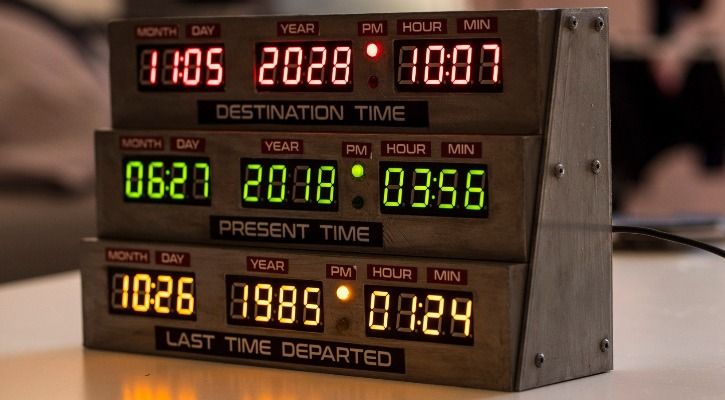Anyone watching the computer would see the event as if time had turned backwards. The researchers – from the Moscow Institute of Physics and Technology and helped by colleagues in Switzerland and the US – expect the technique to improve in time, becoming more reliable and precise with time. Lead researcher Dr Gordey Lesovik, who heads the Laboratory of the Physics of Quantum Information at the Moscow Institute of Physics & Technology (MIPT), said:

The "time machine" described in the journal Scientific Reports consists of a rudimentary quantum computer made up of electron "qubits". A qubit is a unit of information described by a "one", a "zero", or a mixed "superposition" of both states.
In the experiment, an "evolution program" was launched which caused the qubits to become an increasingly complex changing pattern of zeros and ones. During this process, order was lost – just as it is when the pool balls are struck and scattered with a cue. But then another program modified the state of the quantum computer in such a way that it evolved "backwards", from chaos to order.

It meant the state of the qubits was rewound back to its original starting point. Most laws of physics work both ways, in the future and the past. If you see a video of a pool ball knocking into another one, for instance, and then reverse that same video, the physical processes would both make sense and it would be impossible at the level of physics to know which way around would be correct.
But the universe does have one rule that goes only in one way: the second law of thermodynamics, which describes the progression from order to disorder.
If you saw a video of someone breaking a perfectly arranged triangle of pool balls into a mess, for instance, then watching that backwards would obviously look nonsensical.

The new experiment is like giving the pool table such a perfectly calculated kick that the balls rolled back into an orderly pyramid. The scientists found that, working with just two qubits, "time reversal" was achieved with a success rate of 85 per cent. When three qubits were involved more errors occurred, resulting in a 50 per cent success rate. The error rate is expected to drop as scientists improve the devices used to be more sophisticated, the researchers behind the discovery said.
The experiment could have a practical application in the development of quantum computers, the scientists said.







No comments:
Post a Comment